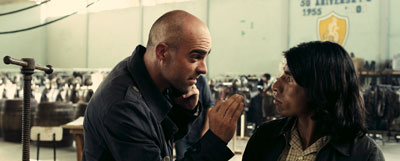As I was reading Crevecouer, I was struck by his contrasting views in his first letter, "What is an American." In this piece, he works to show how vastly different Americans are, yet each person is still considered an American. He compares people based on their physical location, ethnicity, and religion. Each of these factors is used to break the overarching title of "American" into specifics that complicate the nation.
Throughout the beginning of this first letter, it appeared that Crevecouer was going to write about how all of these different peoples were coming together to build the nation of America and create a definition of who an American is. He writes, "Some few towns excepted, we are all tillers of the earth, from Nova Scotia to West Florida...We are all animated with the spirit of an industry which is unfettered and unrestrained, because each person works for himself." The naïve view that begins this piece believes that each person who has come to America is there to create a better nation than the one they left, and to do better in terms of personal gain, which appeared similar for many of the inhabitants.
As one reads on through the letter (and other writings), it is quickly established that not all the people in America are there for the reasons Crevecouer thought, and things may not turn out as well as he imagined. He quickly turns to examples that distinguish and segregate the inhabitants, using terms such as "they," contrasted with the "we" used early on. He writes of times were disagreements were had between the people, and how there is no way to define what an American is, due to the many different cultures found in the land. Crevecouer intended to show that Americans are a new and unified people, but instead, displayed the fact that America was a melting pot from the beginning, and how this diversity may lead to issues.



